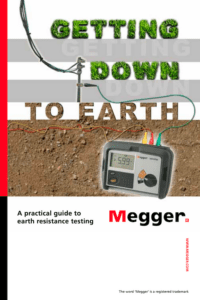 Nothing is quite so common or abundantly available throughout the world as the earth’s soil. We are more apt to think of the earth as something to be tilled for planting or to be excavated for a building foundation. Yet, it also has an electrical property — conductivity (or low resistance) — that is put to practical use every day in industrial plants and utilities.
Nothing is quite so common or abundantly available throughout the world as the earth’s soil. We are more apt to think of the earth as something to be tilled for planting or to be excavated for a building foundation. Yet, it also has an electrical property — conductivity (or low resistance) — that is put to practical use every day in industrial plants and utilities.
Broadly speaking, “earth resistance” is the resistance of soil to the passage of electric current. Actually, the earth is a relatively poor conductor of electricity compared to normal conductors like copper wire. But, if the area of a path for current is large enough, resistance can be quite low and the earth can be a good conductor. It is the earth’s abundance and availability that makes it an indispensable component of a properly functioning electrical system.
- Earth resistance is measured in two ways for two important fields of use:
- 1. Determining the effectiveness of “ground” grids and connections that are used with electrical systems to protect personnel and equipment.
- 2. Prospecting for good (low resistance) “ground” locations, or obtaining measured resistance values that can give specific information about what lies some distance below the earth’s surface (such as depth to bedrock).
- It is not the intent of this manual to go too deeply into the theory and mathematics of the subject. As noted in the references at the end, there are many excellent books and papers that cover these. Rather, the information herein is in simple language for easy understanding by the
user in the industry.
